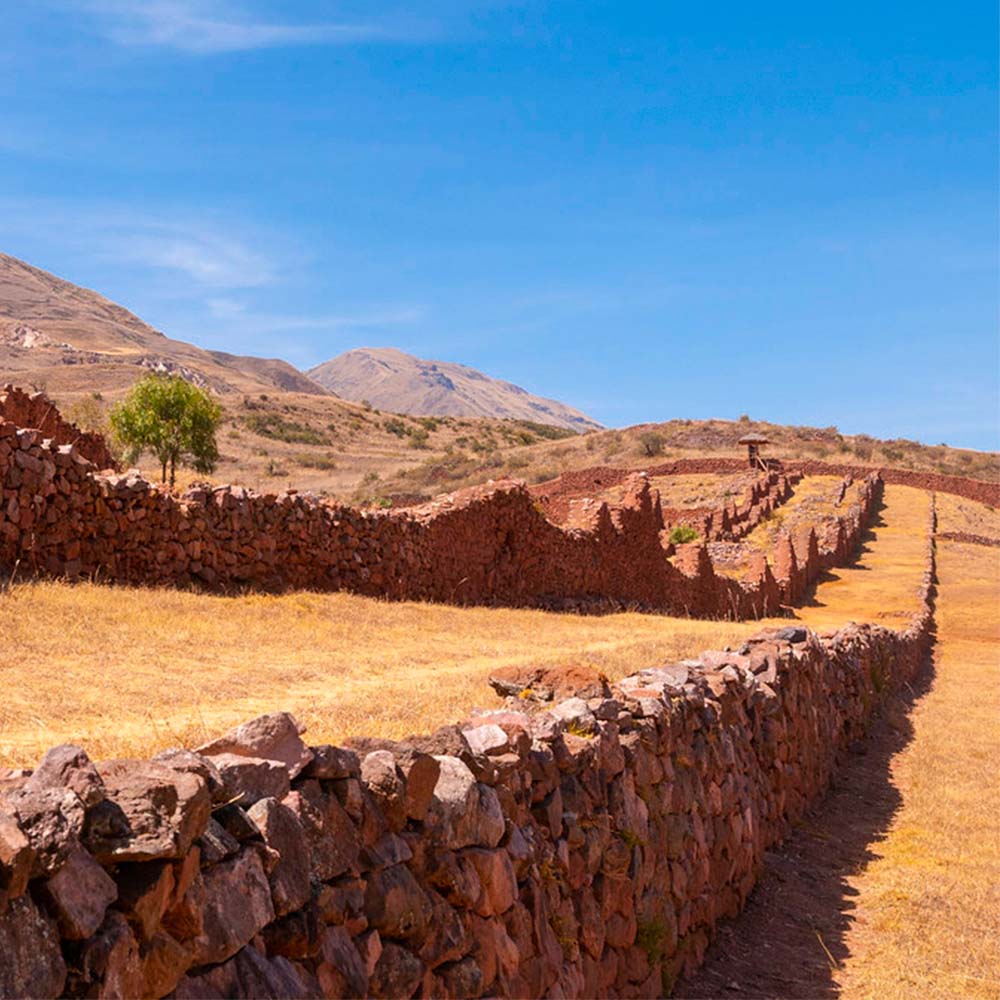


It was one of the most important administrative centers of the Huari (or Wari) culture, from the 6th to the 9th century AD, and represents the epitome of Huari urban planning. Some specialists argue that it remained active until the Inca period, although no evidence has been found to support this presence.
The archaeological park, known in Spanish as Piquillacta and in Quechua as Pikillaqta, which means “City of the Fleas” or “Small City”, was built approximately in the 7th century during the expansion of the Wari culture in a large part of southern Peru.
Pikillaqta served as an administrative, ceremonial, and residential center during the peak of the Wari culture. After the decline of the Wari culture, Pikillaqta was abandoned and later occupied by the Incas, who adapted its structures for administrative and ceremonial uses.
Today, it has become an important archaeological research site and a prominent tourist destination in the southern valley of Cusco.
The archaeological park of Pikillaqta is located 33 km southeast of the city of Cusco, in the territories of the districts of Oropesa, Lucre, and Andahuaylillas. It is situated at an altitude of 3,250 meters.
Pikillaqta shows that it was a well-planned city, with a harmonious and almost perfect geometric design. Square and rectangular shapes predominate in the buildings, courtyards, and plazas, demonstrating its organization.
Its structure is mainly made of adobe and stones, and includes about 700 buildings, 200 courts, 508 colcas (others consider it as houses) and other constructions. Many of these buildings were two and three stories.
Pikillaqta served not only as an administrative and residential center but also had an important ceremonial role. We can find different constructions such as:
This is an impressive structure that served as the main entrance to the Pikillaqta complex, consisting of large rectangular stone blocks with steps. At the top, there is a water channel that was probably used to supply water to the city.
Choqepucjio is a significant area within Pikillaqta, known for its ceremonial and residential structures. This sector, possibly inhabited by the elite of Wari society, contains buildings that show remarkable sophistication in design and construction.
Meaning "place of birds," it is named because it is located on a rocky prominence where birds perch. It is notable for the fineness of its finish and is located near the Huacarpay lagoon.
Amarupata is a Quechua term meaning "place of snakes." This set of stone and mud platforms has water channels that are still used by local residents.
These are the remains of an Inca bridge that crosses the Vilcanota River, located outside Pikillaqta.
Known as "The Rock of the Condors," it is a set of rocks, one of which was shaped into an Andean condor, considered a sacred animal by the Incas.
Monday to Sunday from 7 a.m. to 6 p.m.
Entry to the Pikillaqta archaeological site is included in the Tourist Ticket.
It is advisable to visit Pikillaqta during the dry season, which spans from April to October, as it offers the best weather conditions. However, with proper preparation, this place can be visited year-round.

Happy passengers